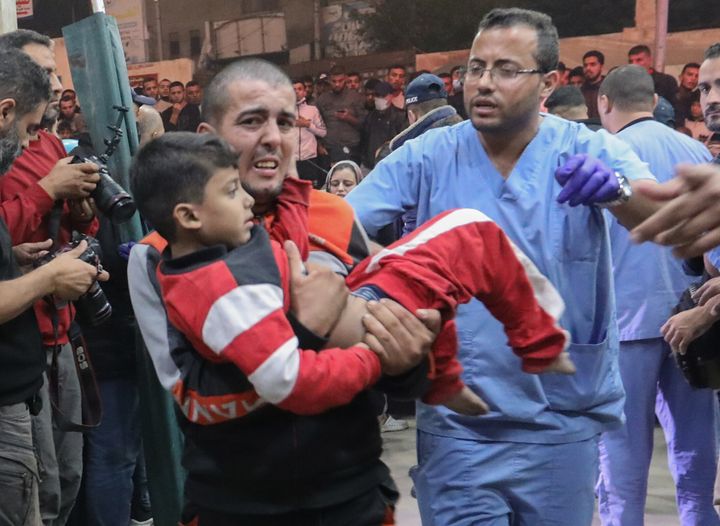
A UNICEF representative has warned there’s a growing risk that disease could end up killing as many children in Gaza as the last eight weeks of bombardment have.
More than 15,500 people are estimated to have been killed in Gaza since the war began on October 7, according to the Palestinian territory’s health ministry – including approximately 6,000 children.
Israel declared war on Hamas almost two months ago after the Palestinian militants killed an estimated 1,200 people on Israeli soil and took around 240 others hostage.
Israel then put Gaza under siege, and launched a series of missile attacks and a ground invasion.
And according to the United Nations International Children’s Emergency Fund (UNICEF), there may soon be another major risk to the displaced Palestinian population – disease.
UNICEF’s James Elder told BBC News on Tuesday that there are some areas which should be safe from bombardments within Gaza.
But, he added: “They are not safe in an international law sense or a moral sense, in terms of safety, but we also mean in terms of food, water, medicine, protection.
“We’re seeing hundreds of thousands of people on their last legs go to a place without a single toilet.
“To dirt, to desert, to bombed out buildings, without any access to water.
“So now we have death from the skies and disease stalking – there’s a perfect storm now.
“We may well see the similar number of children dying, being killed, from disease – if these attacks don’t stop – as we do from the attacks themselves.”
There has been growing international concern about the amount of humanitarian aid reaching Gaza.
On Monday, UN secretary general Antonio Guterres reiterated his call for a “sustained ceasefire in Gaza, the unconditional and immediate release of all hostages and unimpeded and sustained humanitarian aid flow to meet the needs of the people throughout the Gaza Strip”.
It comes as Israel has started to bomb southern Gaza too, weeks after Palestinians in the north of the territory were encouraged to relocate to the south amid an imminent land invasion.
According to the UN’s OCHA, as of November 23, more than 1.7 million Palestinians are already internally displaced in Gaza.
And the World Health Organisation’s Richard Peeperkorn warned on Tuesday that the “situation is getting worse by the hour”.
Speaking to reporters via video link from Gaza, he said: “There’s intensified bombing going on all around, including here in the southern areas, Khan Younis and even in Rafah.”
The WHO’s director-general Dr Tedros Adhanom Ghebreyesus posted on X (formerly Twitter) on Monday over concerns that medical facilities would be at risk in southern Gaza.
He wrote: “Today, @WHO received notification from the Israel Defence Forces that we should remove our supplies from our medical warehouse in southern Gaza within 24 hours, as ground operations will put it beyond use.
“We appeal to #Israel to withdraw the order, and take every possible measure to protect civilians and civilian infrastructure, including hospitals and humanitarian facilities.”
